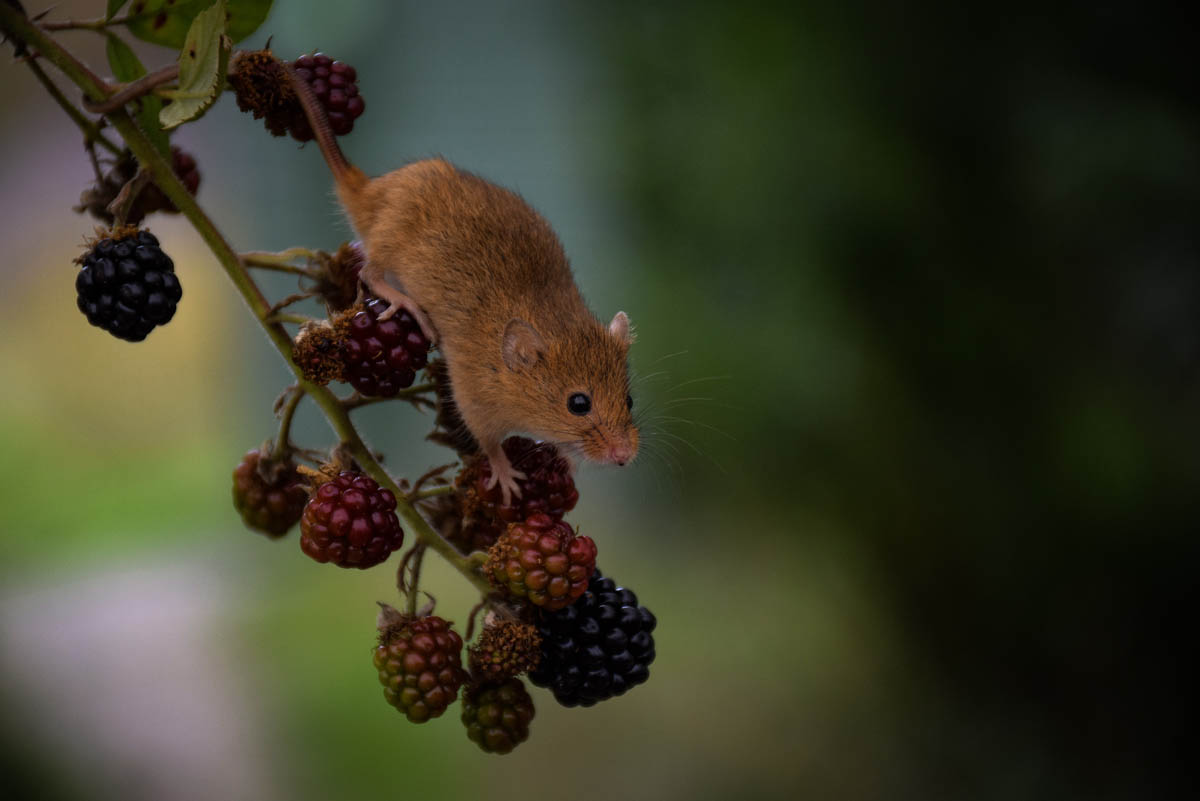The Fragile Wilderness of the Chalk Downland Meadows
Have you ever stopped to appreciate the delicate beauty of the chalk downland meadows? These rare wildflower havens dotting the English countryside are bursting with life yet fragile and fleeting. Their sweeping vistas of softly waving grasses and vibrant wildflowers evoke a sense of timelessness, as if the landscape has remained unchanged since prehistoric times. But looks can be deceiving.
These biodiversity hotspots are in peril, and their future is uncertain. The nutrient-poor, alkaline soil that gives rise to the meadows, dazzling floral displays also makes them difficult to maintain. Over 95% of downland meadows have been lost as land use has intensified over centuries. What remains clings to existence through conservation groups’ efforts to stem the tide of disappearance.
Though a shadow of their former selves, the chalk downland meadows remain vital sanctuaries for wildlife and a living link to England’s ancient natural heritage. Their fragile beauty reminds us of what we stand to lose if we fail to appreciate and protect the wild places in our midst. Have you discovered the fleeting wonder of the meadows? If not, now is the time. Their future hangs in the balance and may not be there forever.
The Origin of the Chalk Downland Meadows
The chalk downland meadows have been part of the British landscape for over 5,000 years. These rolling grasslands were formed after the last Ice Age when forests gave way to open grassy habitats. The thin, alkaline soil that developed over chalk and limestone bedrock couldn’t support dense woodland, so grasslands emerged.
Over time, these ancient grasslands became enriched with wildflowers like cowslips, harebells, and orchids. Rare plants adapted to the harsh conditions. Wildlife found refuge, with birds like stone curlews, lapwings, and skylarks nesting on the open ground. Dragonflies, butterflies, and bees were drawn to the sea of blossoms.
Sadly, over 95% of these meadows have been destroyed. Many were ploughed for crops or grazing. The remnants have become havens for biodiversity. Conservation groups are working to preserve and expand these habitats. Ecological restoration and sustainable management practices are helping bring back lost plant diversity.
If you stroll through the chalk downland meadows today, you’ll find a vibrant landscape that has endured for millennia. Let’s try to safeguard these fragile wildernesses, with their calming beauty and natural heritage, for generations to come. Our native flora and fauna depend on the conservation of these biodiversity hotspots. With care and community support, the chalk downland meadows can thrive again.
Some of the Best Chalk Downland in the UK
Five Areas Where Chalk Downland Meadows Can be Found in the UK:
South Downs National Park, England: This national park in southern England is renowned for its chalk downland meadows, including Winchester Downs and the Devil’s Dyke.
North Wessex Downs, England: Located in southern England, this Area of Outstanding Natural Beauty (AONB) is home to a range of chalk downland meadows, including Pewsey Downs and White Horse Hill.
Yorkshire Wolds, England: In the northeastern part of England, the chalk downland meadows of Yorkshire Wolds, such as Thixendale and Flamborough Head, offer breathtaking landscapes.
Dorset Downs, England: This region in southwestern England is characterised by its rolling chalk downland meadows, including areas like the Cerne Abbas Giant and Eggardon Hill.
Chiltern Hills, England: Stretching across parts of Buckinghamshire, Oxfordshire, Hertfordshire, and Bedfordshire, the Chiltern Hills offer diverse chalk downland meadows, such as Coombe Hill and Ivinghoe Beacon.
The chalk downland meadows are home to some of the rarest wildflowers and plants in the UK. These alkaline grasslands burst into colour each spring and summer, filled with orchids, gentians, and wild thyme.
You’ll spot the striking bee orchid, with its pink petals and brown, furry lip that resembles a bumblebee. These bright flowers lure natural bees in to pollinate them. The dense-flowered orchid has tiny white blooms on a single stem, while the greater butterfly orchid has colourful pink flowers shaped like butterflies.

Vivid blue spring gentians, also called felwort, were once used to treat liver diseases and give the downs a bright blue glow. Rare yellow wort and milkwort add spots of yellow.
Wild thyme, with its purple flowers and aromatic leaves, was used as an antiseptic during World War I. The delicate eyebright, used for treating eye inflammation, has small white blooms with yellow and purple centres.
These are just a few delicate beauties in the chalk grasslands. Sadly, many are endangered due to habitat loss, making the conservation of these unique refuges critical. When you visit the downs, respect the land and give the plants a wide berth. Appreciate them from a distance so future generations can enjoy the fragile beauty of these wildflower wonderlands.
Diverse Wildlife Abounds in the Downs
The chalk downland meadows are home to a diverse array of wildlife. These rolling grasslands provide habitat for many rare and endangered species that have disappeared from much of Britain.
Birds
Over 20 species of birds breed on the downs, including rare birds like the corn bunting, stone curlew, and skylark. These grassland specialists have seen populations plummet due to habitat loss, so the downs provide a haven. You may spot red kites and peregrine falcons soaring overhead or hear the melodic song of the meadow pipit.
Butterflies and Insects
Butterflies like the chalkhill blue, small blue, and silver-spotted skipper flutter across the downs in summer. The nutrient-poor soil and abundance of wildflowers are ideal for these delicate pollinators. Solitary bees and other pollinating insects can also be found busily buzzing between flowers. Some rare moths, like the striped lychnis and chalk carpet, emerge at night.

Reptiles and Mammals
Adders, common lizards, and slow worms sun themselves on the warm ground. Nocturnal mammals like badgers, foxes, and bats come out to hunt at night. The rare harvest mouse and dormouse build nests in the long grass. Keep an eye out for these elusive yet charming creatures.
The chalk downland meadows harbour a wealth of plant and animal life found nowhere else. These fragile habitats deserve our protection so future generations can continue to enjoy encounters with some of Britain’s most iconic yet threatened wildlife. By supporting conservation efforts, we can ensure the gentle undulations of these verdant meadows persist for years to come.
Threats to the Chalk Downland Meadows
The fragile Chalk Downland Meadows face several threats that put their unique biodiversity at risk. As havens for rare plants and wildlife, protecting these meadows is crucial.
Habitat Loss and Fragmentation
The most significant threat is the loss and fragmentation of habitat from development, agriculture, and changes in land use. As more land is converted for human use, the remaining pockets of chalk downland become isolated, making it difficult for plants and animals to migrate and disperse between them.
Invasive Species
Non-native plants introduced from other parts of the world can outcompete the native flora. Once established, invasive species like scrub, bracken and Japanese knotweed are challenging to remove and threaten the delicate balance of the chalk grassland ecosystem.
Unsuitable Grazing and Management
Historically, sheep grazing maintained the open, grassy habitat. Today, overgrazing by livestock can damage the sward, while under-grazing leads to scrub encroachment. Appropriate grazing, mowing, and scrub control are necessary to preserve the mosaic of grassland, scrub and woodland.
Climate Change
Changes in climate, like warmer temperatures, altered rainfall patterns and more frequent droughts or floods, may disrupt the chalk downland habitat. The cool, rainy summers and mild winters the plants and animals have adapted to over thousands of years could shift, forcing some species out of their ecological niches.
To safeguard the UK’s precious chalk downland meadows for future generations, conservation efforts must mitigate these threats through policy changes, habitat protection, responsible land management, and public education. Valuing and understanding these ecologically and culturally significant landscapes is critical to their long-term preservation.
Though fragile, the chalk downland meadows have endured for millennia. With prudent conservation, these beautiful, biodiversity-rich grasslands will continue to flourish.
Conservation Efforts to Protect This Precious Habitat
Conservation Groups Working to Protect the Chalk Downland Meadows
Several organisations are working to conserve what remains of the chalk downland meadows and expand current protected areas. These groups aim to restore degraded habitats, reintroduce native plants and animals, and promote sustainable land management practices.
- The Wildlife Trusts manage over 2,300 nature reserves across the UK, including many chalk grassland sites. They also work with landowners to protect important habitats and species on private land.
- Natural England is a government agency focused on conserving and enhancing the natural environment. They designate Sites of Special Scientific Interest (SSSIs) to protect the best examples of chalk downland meadows and offer habitat management and restoration grants.
- The RSPB, or Royal Society for the Protection of Birds, protects not only birds but other wildlife and their habitats. They own and manage many grassland nature reserves and work with farmers and landowners to establish wildlife-friendly practices.
- Local conservation groups organise volunteer work parties to help manage chalk downland meadows. Activities include scrub clearance, fencing repairs, and habitat surveys to monitor plant and animal populations. Many also raise awareness about the importance of these unique habitats in their communities.
- Reintroduction programs breed and release rare butterflies, moths, and birds into suitable chalk grassland sites. Species like the Adonis blue butterfly, silver-spotted skipper, and corn bunting have benefited from these programs.
Protecting the remaining chalk downland meadows and restoring degraded grasslands will help ensure these fragile yet invaluable habitats are around for future generations. With the commitment of conservation groups and landowners, these beautiful, biodiverse meadows stand a fighting chance to survive and thrive.
Sweeping Vistas and Vibrant Floral Scenes the Wildflowers of Chalk Downland
So there you have it, a glimpse into the fragile and fleeting beauty of the chalk downland meadows. Though small, these havens harbour a wealth of life that has persevered for centuries. Their sweeping vistas and vibrant floral scenes inspire wonder and remind us of nature’s resilience. Yet they hang in a precarious balance, their future uncertain without our continued vigilance and care. As stewards of this land, we owe it to future generations to ensure these meadows are not lost to history.
We must do our small part to protect and preserve these remote wildernesses. The rewards of succeeding are as rich and timeless as a summer’s day immersed in the downland’s sea of blossoms, a living reminder of the heritage we stand to lose if we fail in our duty as guardians of this land. The time for action is now. Our chalk downland meadows deserve nothing less..


